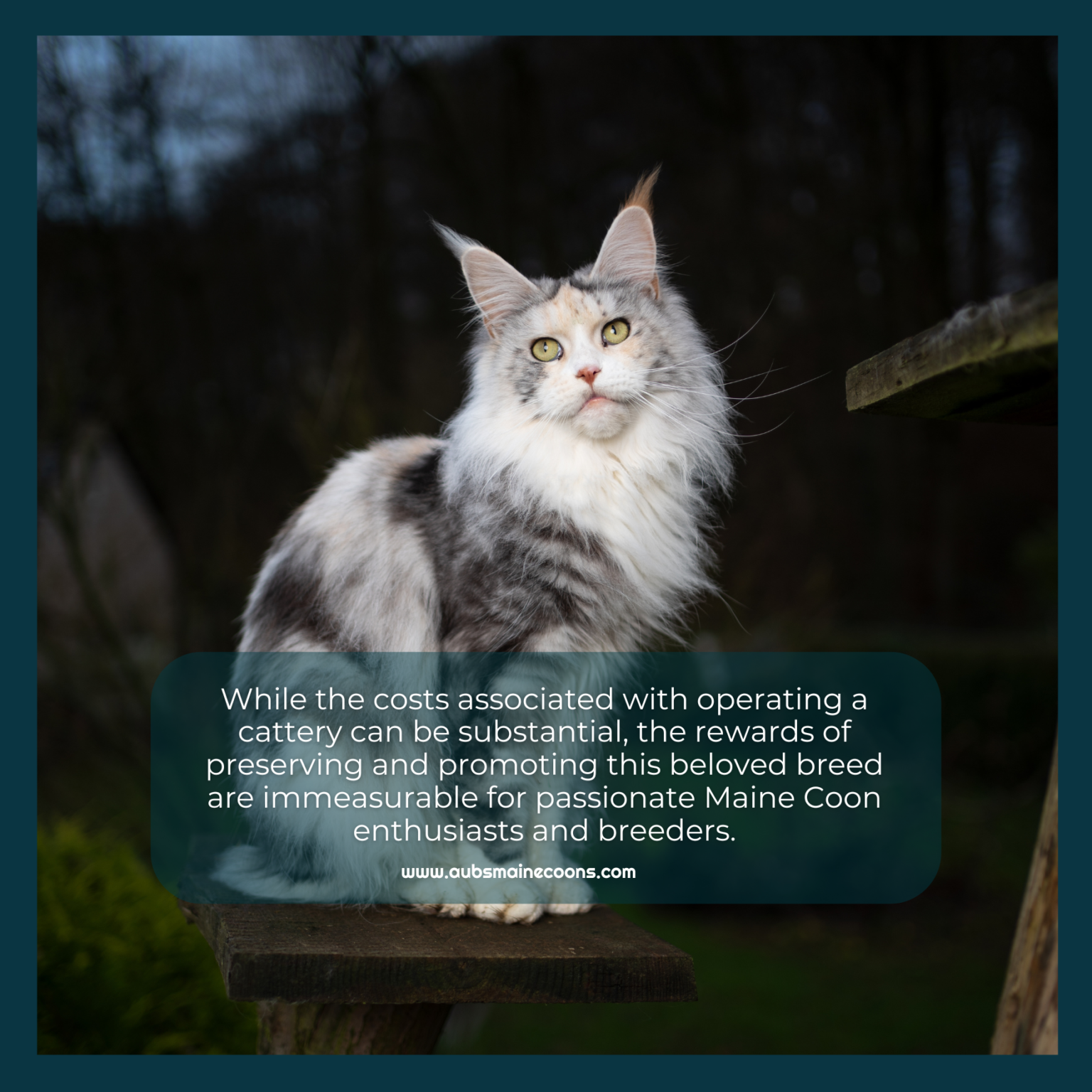The Regal Maine Coon: Why These Feline Royalties Command a Premium Price
Maine Coon cats, with their majestic appearance and affectionate nature, have captured the hearts of cat lovers worldwide. For those passionate about breeding and preserving this iconic breed, establishing and maintaining a Maine Coon cattery is a labor of love. However, it’s essential to understand the financial commitments involved in running a cattery. Let’s explore the various costs associated with operating a Maine Coon cattery and what aspiring breeders should consider before embarking on this endeavor.

1. Initial Investment: Establishing a Maine Coon cattery requires a significant initial investment. This includes purchasing high-quality breeding cats from reputable breeders, obtaining breeding rights and pedigrees, and acquiring necessary equipment and supplies for the cattery. The cost of acquiring breeding cats can vary widely depending on factors such as pedigree, lineage, and breeding potential, but the range is between $3000-$7000.
2. Breeding Expenses: Breeding Maine Coon cats involves various expenses, including veterinary care, genetic testing, and reproductive assistance if needed. Routine veterinary care, vaccinations, and health screenings are essential for maintaining the health and well-being of breeding cats and their offspring. Genetic testing for hereditary diseases and conditions helps ensure responsible breeding practices and minimize the risk of passing on genetic disorders.
3. Housing and Facilities: Providing adequate housing and facilities for Maine Coon cats is crucial for their health, comfort, and well-being. Cattery facilities should be spacious, well-ventilated, and equipped with amenities such as scratching posts, climbing structures, and cozy resting areas. Additionally, maintaining a clean and hygienic environment is essential for preventing the spread of diseases and ensuring the health of the cats.

4. Nutrition and Supplies: Proper nutrition is vital for the health and development of Maine Coon cats, particularly breeding cats and nursing mothers. High-quality cat food, supplements, and dietary supplements may be necessary to meet the nutritional needs of breeding cats and their offspring. Additionally, ongoing expenses for litter, grooming supplies, and other essential supplies should be factored into the cattery budget.
5. Marketing and Promotion: Promoting a Maine Coon cattery and attracting potential buyers requires marketing and advertising efforts. This may include creating a professional website, attending cat shows and exhibitions, participating in breed-specific forums and communities, and utilizing social media platforms to showcase the cattery’s cats and kittens. Marketing expenses should be budgeted to effectively reach and engage with target audiences.
6. Contingency Fund and Unexpected Expenses: Running a Maine Coon cattery involves inherent risks and unexpected expenses that may arise. It’s essential to establish a contingency fund to cover unforeseen veterinary bills, emergency medical care, and other unexpected costs that may arise during the operation of the cattery. Having financial reserves in place helps ensure the stability and sustainability of the cattery in the face of unforeseen challenges.
In conclusion, running a Maine Coon cattery requires a significant financial investment and ongoing commitment to the health, welfare, and promotion of the breed. Lake View Coons did an excellent blog post that breaks down the cost even more. You can see that post here. While the costs associated with operating a cattery can be substantial, the rewards of preserving and promoting this beloved breed are immeasurable for passionate Maine Coon enthusiasts and breeders. By understanding and responsibly managing the financial aspects of running a cattery, breeders can contribute to the continued success and longevity of the Maine Coon breed for generations to come.